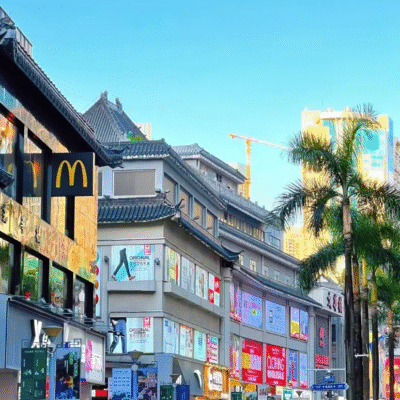Since the construction of China’s first metro line began in Beijing in 1965, the metro has gradually developed into one of the most important modes of transportation for urban residents.
In Shenzhen, for example, the city’s metro network set a new record on December 31, 2024, with a total of 11.88 million passenger trips in a single day—highlighting the shenzhen metro’s central role in daily commuting.
For international visitors, using the shenzhen metro is not only convenient and efficient but also helps avoid unnecessary hassles, making it one of the most recommended ways to get around the city.
Why Choose the Shenzhen Metro for Getting Around?
With a total operating length of 567 kilometers, the Shenzhen Metro network covers all ten administrative districts of the city, seamlessly connecting urban centers with suburban areas and forming a “one-hour commute circle” that significantly enhances daily travel efficiency for residents and visitors alike.
Avoid Unnecessary Hassles
In China, overcharging by taxi drivers is not uncommon. A few years ago, I took a taxi in one district of Shenzhen for a short trip of about three kilometers and was charged over 50 yuan.
Later, I found out the actual fare should have been around 20 yuan.
Incidents like this are fairly widespread across Chinese cities, especially when drivers notice the passenger is a foreigner.
For example, I once saw a short video featuring a German influencer who is quite popular in China—he went to get his suitcase repaired, a service that normally costs around 100 yuan. However, upon realizing he was a foreigner, the shopkeeper raised the price by several times.
Additionally, China’s public bus system can be complicated and confusing for first-time visitors due to intricate routes and limited English signage.
For these reasons, we strongly recommend taking the metro instead—it’s fast, reliable, clearly priced, and helps you avoid unnecessary hassles.
How to Take the Metro in Shenzhen
Language barriers are not a concern, as metro stations are equipped with self-service ticket machines that offer English-language interfaces.
Please refer to the following steps for detailed instructions.
1.How to Find the Nearest Metro Station
We recommend using a Chinese map app such as Amap (Gaode Maps). Simply type “metro” or “地铁” into the search bar, and the app will show you the nearest metro stations based on your current location. Follow the navigation to reach the station.
In general, metro station entrances in China are clearly marked and follow a consistent design, making them easy to recognize.
For reference, here is an example:
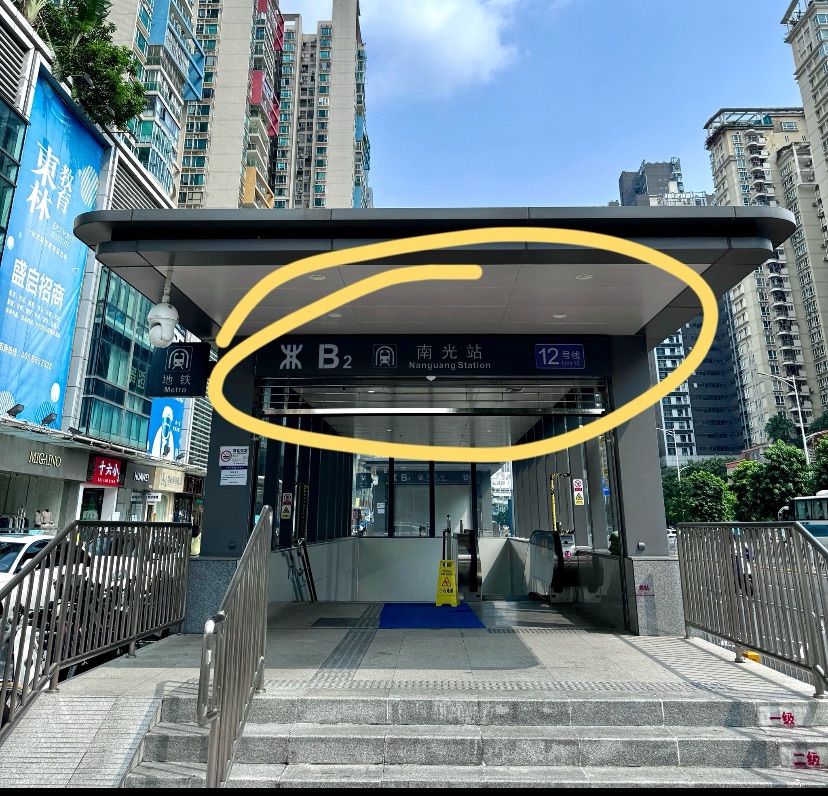
2.How to Buy a Metro Ticket from a Vending Machine in Shenzhen
It’s perfectly normal not to know how to use the machine — even as a local, I sometimes find it confusing myself. Pay attention to the operating hours — most metro lines stop running around 11:00 PM.
Once you enter the metro station, look for a large vending machine with a touchscreen display. On the bottom left corner of the screen, you’ll find a language option — switch the interface from Chinese to English.
Next, use the map displayed on the screen to select your destination. The station names will be shown in English after the language switch.
Important: Be sure to prepare some coins (RMB) in advance, as the machines may not accept large bills or foreign cards.

After making the payment, you’ll hear a clicking sound from the bottom of the machine — that’s your ticket being dispensed!
Yes, the metro ticket looks quite similar to a coin.
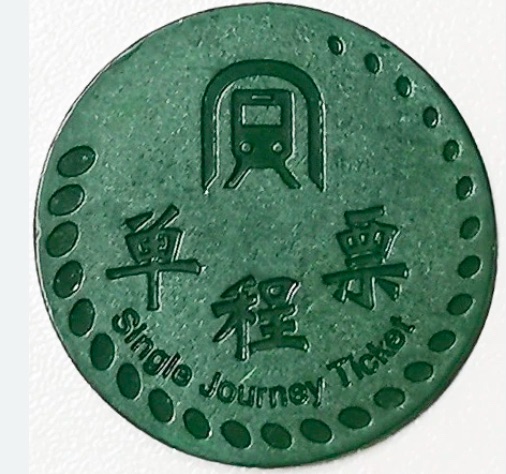
Ticket Prices for the Shenzhen Metro
The fare structure of the Shenzhen Metro is based on a distance-based tiered system.
The initial fare is ¥2 for the first 4 kilometers. For distances between 4 and 12 kilometers, an additional ¥1 is charged for every 4 kilometers.
Between 12 and 24 kilometers, ¥1 is added for every 6 kilometers, and beyond 24 kilometers, ¥1 is added for every 8 kilometers.

For instance, a journey of 10 kilometers costs ¥3, while a 20-kilometer trip amounts to ¥5. Additionally, Line 11 features business-class carriages, with fares set at twice the rate of standard carriages for the corresponding distance.
Shenzhen Metro Route Map Explained

Shenzhen Metro Map Download (2025)
Line 1 (Luobao Line)
This was the first metro line I ever took in Shenzhen. Running east to west from Luohu Port to Airport East, it’s one of the city’s busiest and most tourist-friendly lines. Here are some of the must-see stops:
| Place | Description |
|---|---|
| Luohu | The main border crossing into Hong Kong |
| Laojie | Explore Dongmen Pedestrian Street for local shopping and snacks |
| Huaqiang Road | Home to the world-famous electronics market |
| Window of the World | A classic Shenzhen attraction with miniature landmarks from around the world |
| Shenzhen Bay Park | Perfect for seaside walks and sunset views |
| Airport East | Direct access to Shenzhen Bao’an International Airport |
Line 3 (Longgang Line)
More local in vibe, but filled with hidden gems. It heads northeast toward Longgang and is great for exploring daily life in Shenzhen.
| Place | Description |
|---|---|
| Shaibu | A quieter station near the Wenjindu Port |
| Buji | Known for local markets and shopping streets |
| Danzhutou | Close to Dafen Oil Painting Village, a paradise for art lovers |
| Henggang | A lesser-known but lively area with local food |
Line 11 (Airport Express Line)
This is hands-down the fastest and most “luxurious” metro line in Shenzhen. It connects the city center to the airport and offers business-class carriages.
| Place | Description |
|---|---|
| Futian | The heart of the CBD, near Ping An Financial Center and Shopping Park |
| Chegongmiao | Surrounded by restaurants, offices, and bars |
| Houhai | Stop here for MixC World (Nanshan) and Talent Park |
| Bitou | A quiet, nature-surrounded station at the city’s edge |
Lines 9 & 10
These two lines are perfect for relaxed weekend adventures. They serve quieter neighborhoods with parks, hidden cafés, and chill vibes.
| Place | Description |
|---|---|
| Yuanling (Line 9) | Great local eats and everyday Shenzhen scenes |
| Meilin (Line 9) | Near Meilin Greenway and Reservoir — perfect for hiking |
| Zimaoling (Line 10) | A peaceful residential stop with indie bookstores and craft shops |
| Lianhua Village (Line 10) | A short walk to Lianhua Hill Park for panoramic city views |
| Futian Checkpoint (Line 10) | A direct link to Hong Kong via Lok Ma Chau |
The above are some of the most frequently used metro lines in Shenzhen. Due to heavy passenger traffic, it is advisable to start your journey early to avoid congestion. Next, let’s take a look at the security check procedures.
3.How to Pass Through Metro Security Check in Shenzhen
Before entering the metro platform, all passengers must go through a security check — it’s a routine procedure in all Shenzhen metro stations.
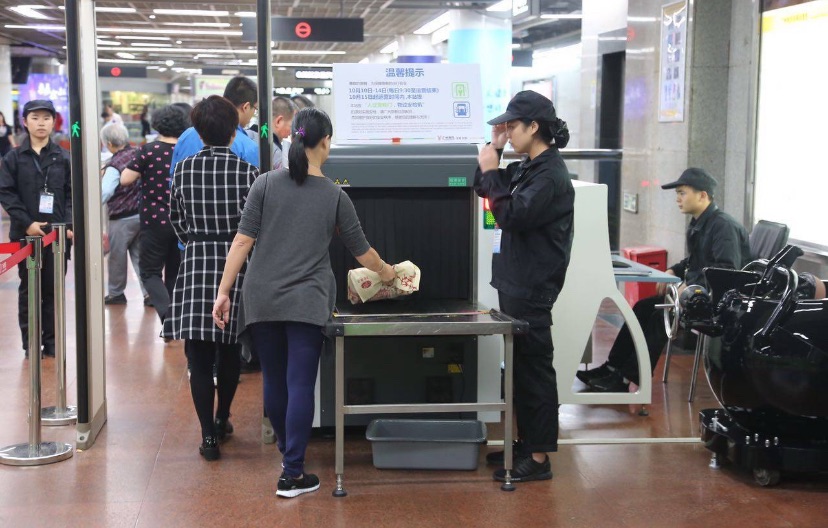
Here’s what to do:
1. Place your bag on the conveyor belt of the X-ray scanner. Bottled drinks may be checked separately, and you might be asked to take a sip to prove it’s safe.
2. Walk through the metal detector when the staff signals you.
3. Follow instructions from the security personnel if they ask to inspect your belongings.
Don’t worry — the process is usually quick and smooth. Just stay calm, follow the signs, and you’ll be through in no time.
Friendly local tip: In many cases, security checks at Shenzhen Metro stations are relatively relaxed due to the high volume of daily passengers. Occasionally, you may even encounter stations where you can enter without going through a security check — don’t be surprised.
4.Proceed to the Ticket Gate (Turnstile Area)
After passing through the security check, head toward the ticket gates. Here’s what to do next:
1. Scan your metro ticket, transportation card, or QR code on the sensor at the gate.
2. Once the gate opens, walk through quickly but carefully — don’t stop in the middle.
3. Keep your ticket if it’s a single-use coin-style one, as you’ll need it again to exit the station at your destination.
If you have any issues, metro staff are usually nearby to help.
5.How to Find the Right Metro Platform
After passing through the ticket gates, look up for the directional signs and follow them to reach the correct metro platform.
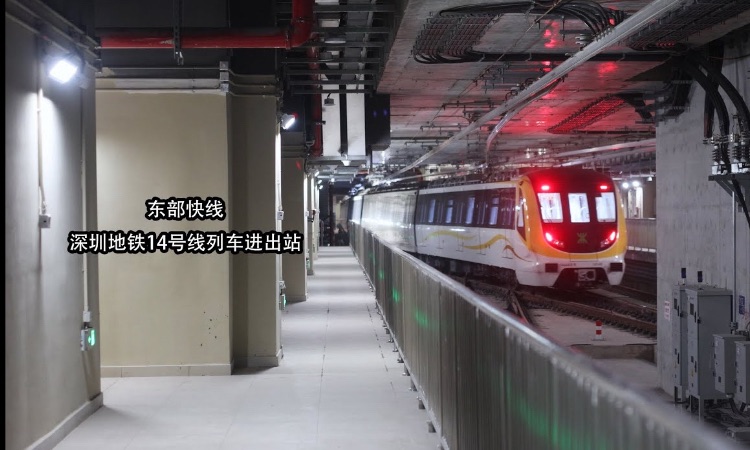
1. Check the direction of travel: Each platform clearly indicates which direction the metro is heading. Look for your destination station or the name of the terminal station on that line.
2. Follow the line color and number: Each Shenzhen Metro line has a specific color and number. Bilingual signs (in Chinese and English) are displayed on walls, floors, and overhead to guide you.
3. Not sure which way to go? Don’t worry — metro maps are displayed throughout the station, and uniformed staff are usually available to help.
Once you find the right platform, take the escalator or stairs, stand behind the yellow safety line, and wait for the metro to arrive.
Our Perspective
We hope this guide has been helpful for navigating the Shenzhen Metro. If you have any questions or additional travel tips to share, feel free to leave a comment below. We’ll continue to provide practical information to support your journey. Wishing you a pleasant stay in Shenzhen—may you fully enjoy the charm and convenience this city has to offer.

